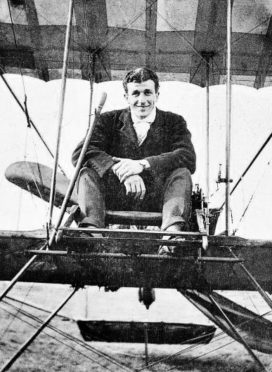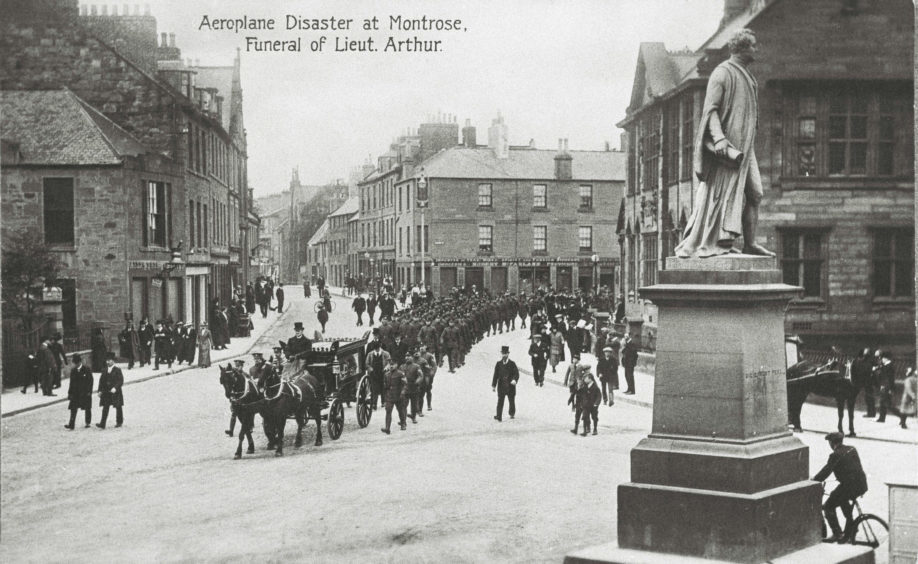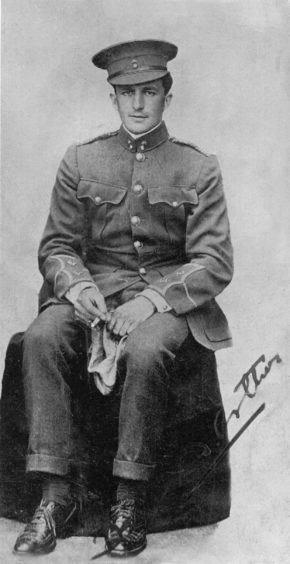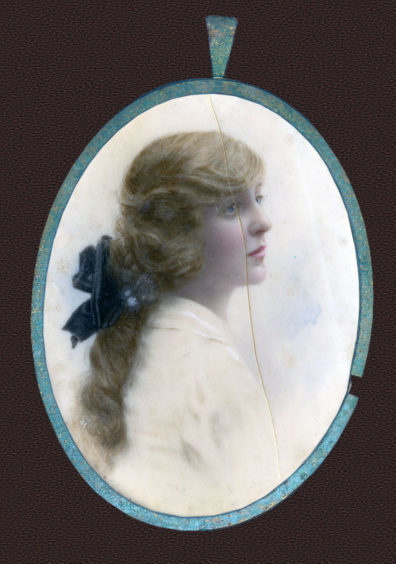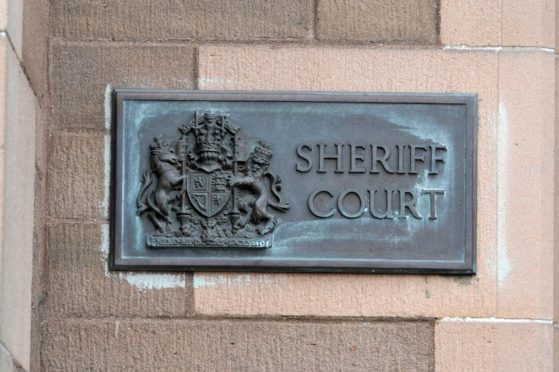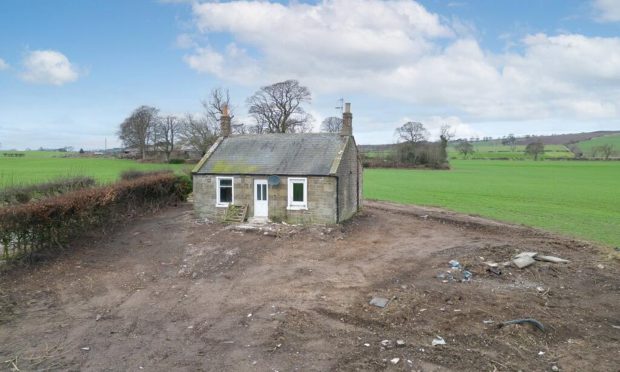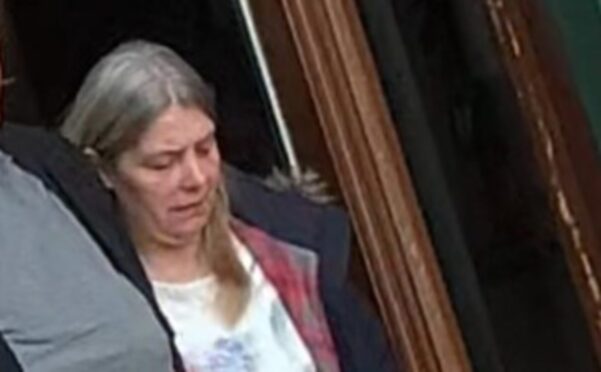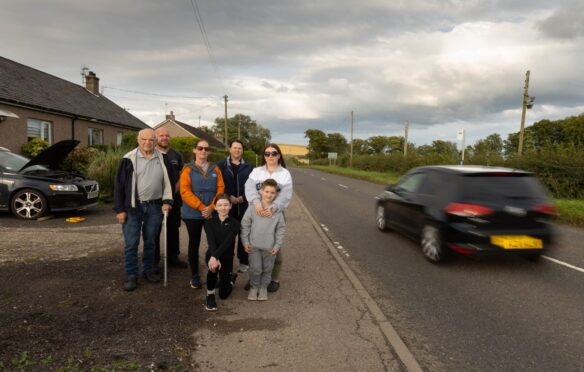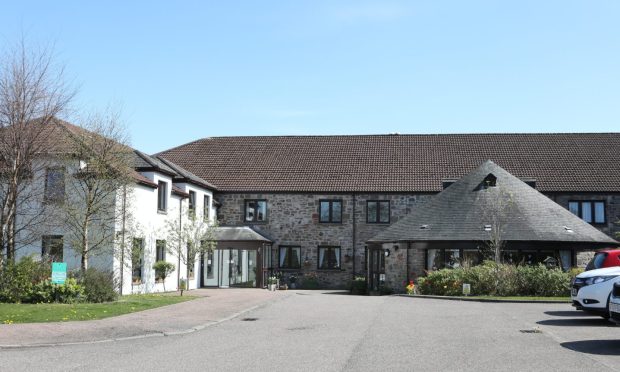The ghost of a young pilot who was killed in a tragic accident at Montrose airfield is still being seen 105 years after his death.
Dr Dan Paton, the curator of Montrose Air Station Heritage Centre, revealed the most recent sighting of Lieutenant Desmond Arthur happened just a few weeks ago.
He was speaking as volunteers gathered to lay flowers at the airman’s grave this weekend on the anniversary of his death in 1913.
“Two weeks ago, in a new building on the site, a figure appeared in front of a young volunteer,” said Mr Paton.
He said the “ghost” was dressed in old-fashioned flying gear, much like a figure who was seen emerging from a mist and walking straight through a wall in the old headquarters building two years ago.
Some believe it was the spirit of Lt Arthur — one of a number of Irishman with No2 Squadron of the Royal Flying Corps which came to Montrose in February 1913.
The squadron at that time were flying from a farm at Upper Dysart south of Montrose.
Lt Arthur fell 2,000 feet to his death when the upper wingtip of his BE2 Aircraft No205 broke up and the whole structure collapsed.
His body made a deep impression in the ground and the impact broke every bone in his body.
The wreck of the BE2 fell 200 yards away in a field near Lunan next to the railway line.
An inquiry found the cause of the tragedy to be a faulty repair to the upper wing.
Lt Arthur was buried with full military honours at Sleepyhillock Cemetery, Montrose, the first pilot to be interred there.
His ghost made its first appearance just a few years later.
Dr Paton said: In early 1915 The airfield at Montrose quickly became a busy RFC base again.
“Officers lived in the old Barracks building in Montrose which is where Lt Arthur had briefly resided prior to his death and it is there that a ghostly figure began to appear in 1916.
“It made its first appearance to a Major Foggit but was soon witnessed by other officers, an apparition wearing a uniform like themselves.”
Between 1936 and the outbreak of war in 1939, there were no fatal accidents at Montrose and pilots attributed this to the benign influence of their ghostly comrade.
However, strange incidents were recorded during the war, including sightings of ancient biplanes and figures in flying gear at the old entrance to the air station and in one of the hangars.
“Visitors to Montrose Air Station ask about the ghost and we tell them the stories but unlike some visitor attractions it does not figure prominently in our marketing or our exhibitions,” said Mr Paton.
“We hope that he truly rests in peace.”
The End of a Romance
The death of Lt Arthur revealed a romance.
On his shattered body was found a small framed portrait of a young women, the glass cracked by the impact.
The portrait, donated by the family of the young woman to Montrose Air Station Heritage, was of Miss Winsom Ropner.
She was the daughter of a successful ship owner in Hartlepool and Lt Arthur’s diary revealed that he visited the family home of Miss Ropner and that they were frequently in company.
At the time of his death Lt Arthur was 28 and she was 14.
In 1913, the strict moral standards of Victorian Britain still governed sexual conduct but attitudes to this kind of relationship were more relaxed than today.
Winsom was often in company with Desmond but never alone.
Postcards, written by her to a friend, donated by her family to the Heritage Centre, show that she returned his affection.
It was a relationship seemingly destined to lead to marriage.
In his will he left her the bulk of his fortune, amounting to more than £1 million in modern money.
In 1918 aged 22, Winsom Ropner married another RFC pilot, but she did not forget her first love and named her first born son Desmond.
